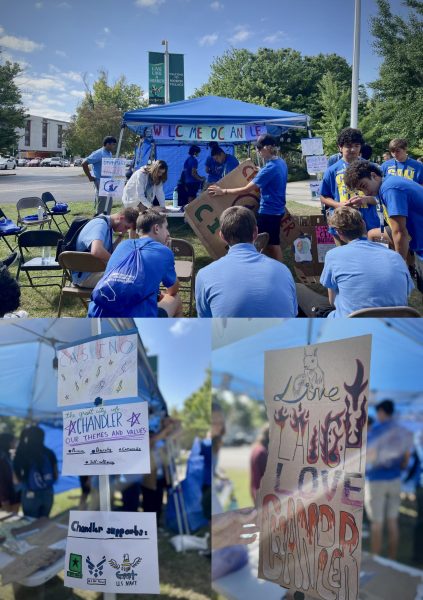Education Is a Right, Not a Business Deal
Art/Photo by Samantha Takeda
With Biden’s student loan debt forgiveness plan on pause until the Supreme Court reaches its decision, 45 million Americans are left wondering if they’ll have to carry the financial burden of college into the future.
More than 45 million Americans have taken out student loans, totaling to a whopping $1.6 trillion of debt. Their situation has been thrust into the national spotlight after the Biden administration announced in October 2022 that it would forgive a significant portion of student debt for many borrowers, allowing Americans who have received federal student loans to have up to $10,000 in debt forgiven if they did not receive a Pell Grant, and up to $20,000 for Pell Grant recipients.
However, many have yet to see any debt forgiven; the plan was presented to the Supreme Court after being challenged by conservative states. If the plan is upheld by the Supreme Court, it would bring financial relief to millions. It doesn’t, however, address the fundamental problem: the exorbitant cost of college.
First, the plan doesn’t give relief to everyone. It only covers federal student debt, which 8% of borrowers don’t have. While it may not sound like a lot, that comprises 3.6 million students left out of Biden’s plan. This leads us into the second flaw: the principles the plan is based on. The plan was primarily justified by the extra financial uncertainty caused by the pandemic. Thus in the absence of the pandemic, the debt of 45 million borrowers would not have been a governmental priority.
But the problem with student debt is not just the financial burden, but the fact people have to pay out of pocket expenses at all. It’s like this: If the fire department, despite being publicly funded, costs $25,000 per call, that would be a pretty horrible reality to live in. It wouldn’t make it any better if people could take out federal fire department loans that could be paid off over a few years. It would be horrible — not because the price is especially steep, or payment is expected too quickly — but because anyone is expected to pay at all. We recognize this emergency service as a human right by making it free and universally available. The same should be done with higher education.
However, West’s college and career counselor Mr. Vick explained that “the state and federal government actually provide grants that are kind of like free scholarships.” Thus “submitting [your] financial aid application” can open the door to different types of aid and scholarships.
It is undeniable that there are viable paths to a debt free college experience, and financial aid can help many students. However, these paths don’t address the root problem, but rather deal with the fallout. While it’s a step in the right direction, it ultimately falls short of a solution. It is a bandage, not the cure.
The cure is nothing less than making public colleges free and canceling all student debt.
Additionally, supporting these policies can also promote racial justice. Catherine Piotrowski (10), a member of the Torrance South Bay Youth & Government Delegation, explained that “if you did forgive student loan debt, I think it would help bridge the racial wealth gap.” The burden of student loan debt falls disproportionately on Black borrowers, who often come from communities prevented from building generational wealth. Student loan debt only pushes these communities deeper into financial instability. This situation does not have to be permanent, however. Forgiving student loan debt would give those currently in debt a clean slate by which they could pursue a career of their choice, without the constant stressor of debt. This would in turn increase economic mobility and be a first step in building generational wealth in the communities which need it the most.
Finally, making public colleges and trade schools free would prevent the problem of student debt from ever arising again, allowing students easy access to education regardless of the situation they came from. In the process our society would become more democratic, just, and equal. It will not only create a more accessible and equal society for us, but for generations to come.








